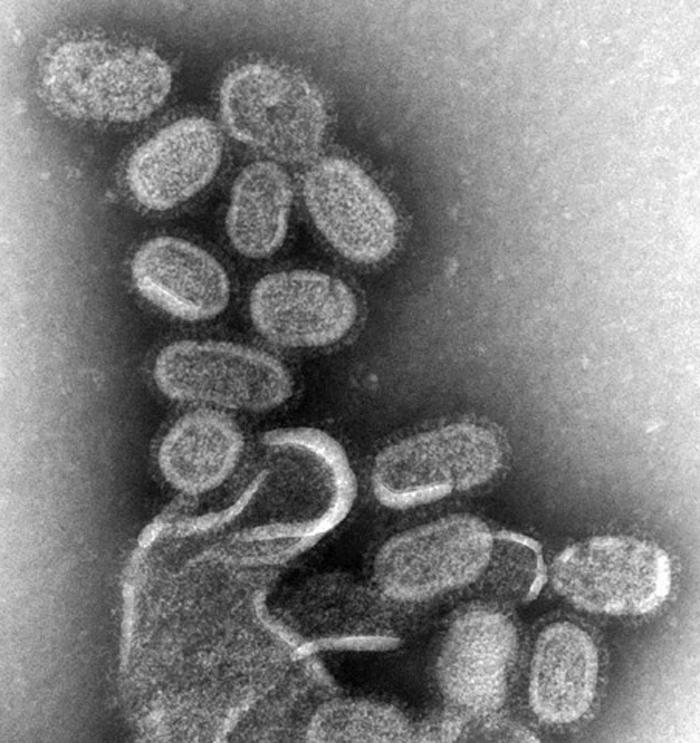Biosecurity Incidents In Top U.S. Labs—What, Me Worry? Influenza Edition
/ In the same report published by the CDC in July 2014 that discussed a laboratory incident concerning anthrax, an incident concerning influenza was also revealed. In August 2014, a full report detailed the cross-contamination of a non-pathogenic H9N2 strain of avian (bird) influenza with the highly pathogenic H1N1 strain (remember the 2009 flu pandemic? That’s the one…) which then sent it out to a U.S. Department of Agriculture lab that had no idea what they were dealing with. Fortunately, the Department of Agriculture lab is also a biosafety level III (BSL III) lab, so the samples were handled under BSL III containment procedures. As it turned out, no workers were infected with the pathogenic strain, a very lucky break as the story could have ended very differently.
In the same report published by the CDC in July 2014 that discussed a laboratory incident concerning anthrax, an incident concerning influenza was also revealed. In August 2014, a full report detailed the cross-contamination of a non-pathogenic H9N2 strain of avian (bird) influenza with the highly pathogenic H1N1 strain (remember the 2009 flu pandemic? That’s the one…) which then sent it out to a U.S. Department of Agriculture lab that had no idea what they were dealing with. Fortunately, the Department of Agriculture lab is also a biosafety level III (BSL III) lab, so the samples were handled under BSL III containment procedures. As it turned out, no workers were infected with the pathogenic strain, a very lucky break as the story could have ended very differently.
As a scientist, the moment I heard this story, I knew exactly what had likely happened and it’s a big no-no in working with cells and viruses. Keep in mind, the error wasn’t identified until six months after the fact, so the worker couldn’t recall the day like it was the previous week, but reported working with then non-pathogenic H9N2 virus, decontaminating the biological cabinet and the working with the pathogenic H1N1 virus. However, of the 1.5 hours required to do all of this, key card access indicated the worker was only present for 51 minutes and that also included time to shower out of the facility and dress in street clothes. Clearly, the full protocol was not carried out. The scientists admitted that they were under pressure at the time to complete work for an upcoming WHO vaccine conference, and, that day in particular, the scientist in question was rushing to get to a lab meeting. Corners were clearly cut.
There are two scenarios that could have happened:
- Considering that each infection should take 30 minutes, it is possible the scientist did both infections in the biological cabinet at the same time. To put it plainly, this is NOT done. One of the first rules of tissue culture is that products are kept separate to ensure purity of the product and safety of the current and any future lab worker. I’d like to think this isn’t what happened.
- Instead of following protocol and working with the less pathogenic strain first and then the pathogenic strain, the scientist may have mixed up the order, working with the more pathogenic strain first and then not decontaminating afterward before moving onto the second, less virulent strain. Personally, I think this is what happened. Also, as PCR testing of the H9N2 strain doesn’t indicated H1N1 contamination, it’s likely they weren’t used concurrently.
One other concerning incident happened in association with this cross-contamination. When the receiving lab started to use the virus, chickens in the experiment started to unexpectedly die. Upon testing their virus, they determined that their H9N2 was contaminated with the deadly H1N1. When they informed the CDC, the lab team tested their stock of H9N2 to confirm that it was indeed contaminated with H1N1. But they did not report the incident at the time. It wasn’t until a second CDC team found atypical results with their stock of H9N2 virus that the original team reported the incident. At that time, all connected stocks of H9N2 were destroyed. Luckily all work done by the second team was conducted under BSL III containment, so there was no risk to any of the lab personnel.
For a group that is considered by most scientists as the gold standard, this incident combined with the anthrax incident is quite distressing. Scientists did not display good laboratory practices, training, communication skills, and in many cases, common sense. As a scientist myself, especially as one trained in BSL III procedures, many of these errors would simply not be acceptable or expected at our facility. Protocols and training are already in place to avoid this and a detailed incident reporting procedure is in place (and let me assure you, I’ve used it for BSL III incidents twice). After all this, I know I certainly look at the CDC differently, and I’m sure many other scientists do as well.
Next week we’ll be back with our last installment in this series. What happens when a virus that is nearly eradicated pops up in someone’s freezer? Come back next week and we’ll tell you all about it…
Photo credit: Wikimedia Commons



 Planning
Planning 40.4%
40.4%